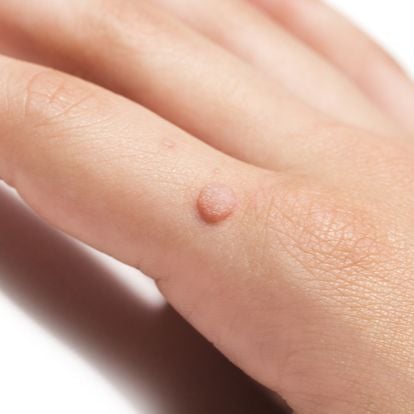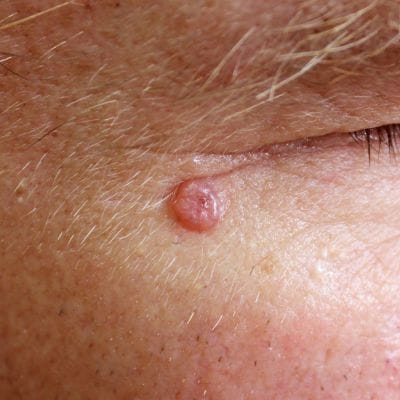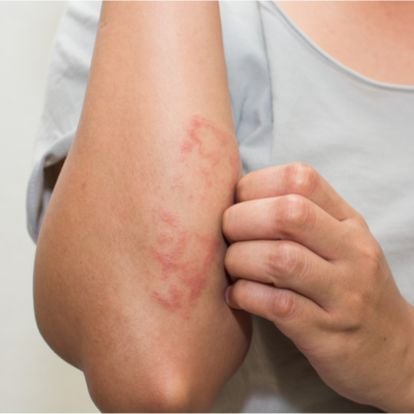Squamous Cell Carcinoma
Squamous cells are found throughout our body; they line the surface of many parts of our body, protecting the tissue and organs beneath. They are found in our respiratory tracts and also our digestive tracts. In our skin, squamous cells make up the outer part of our epidermis (the outermost layer of skin).
Our squamous cells are continually being replaced- newer squamous cells are made to replace the older squamous cells, which are being shed over time. Squamous cell cancers occur when the normal cycle is disrupted, and the squamous cells grow out of control. They can occur anywhere in the body where squamous cells are found, often in the skin. Squamous cell carcinoma of the skin is the second most common type of skin cancer.
Squamous cell carcinomas appear most frequently in areas exposed to direct sunlight, such as the face, ears, lips, neck, and back of the hands. They can arise from pre-cancerous growths called actinic keratoses. They can also occur from areas of chronic inflammation or injury.
While most squamous cell carcinomas can be easily treated and cured, these skin cancers can be deadly if left unchecked.
What are the Symptoms of Squamous Cell Carcinoma?
Knowing the signs and symptoms of squamous cell carcinoma can help with early detection, treatment, and cure.
What can squamous cell carcinoma look like?
- Rough, scaly, red patch
- Wart-like growth
- Horn-like growth
- Firm dome-shaped growth with a central crater
- Non-healing sore
- Crusted lesion which is tender, persistent, or bleeds
What are the Risks Factors for Developing a Squamous Cell Carcinoma?
Certain factors can make you more predisposed to developing squamous cell carcinoma including:
- UV radiation in the form of sun exposure or use of tanning beds
- Fair skin
- Increasing age
- Male sex
- A personal history of pre-cancers (actinic keratoses) or skin cancers
- Weakened immune system because of illness or certain immune suppressing drugs, such as those taken by transplant patients
- Long-term skin inflammation or injury
- History of human papillomavirus (HPV)
- Smoking
Protecting your skin from the sun can help reduce your risk for squamous cell carcinomas. Dermatologists recommend avoiding the sun during peak hours, applying broad spectrum sunscreen (SPF 30 or higher), and wearing sun protective clothing. The use of tanning beds is also strongly discouraged.
Dermatologists recommend routinely checking your skin and scheduling an appointment to evaluate any new, unusual, changing, or symptomatic growths.
How is Squamous Cell Carcinoma Diagnosed?
Any new, unusual, changing, or symptomatic growth should prompt a visit to your dermatologist. If you have risk factors (personal or family history of skin cancers, transplant recipient, significant sun exposure or tanning bed use in the past, etc), scheduling regular appointments with your dermatologist can help with accurate and timely diagnosis and treatment of skin cancers.
Your dermatologist will evaluate your skin and any lesions or growths of concern at your visit. A skin biopsy (a procedure that removes a small skin sample) is usually done to confirm a definitive diagnosis. Once the diagnosis of squamous cell carcinoma has been confirmed, your dermatologist will discuss treatment options.
Treatment for Squamous Cell Carcinoma:
When detected early, most squamous cell carcinomas can be treated and cured. Treatment is important because untreated skin cancers will continue to grow and spread. Squamous cell carcinomas can metastasize and spread to lymph nodes and other parts of your body beyond the skin. Ultimately, untreated squamous cell carcinomas can be deadly.
The most common treatment options for squamous cell carcinomas include:
Curettage and Electrodessication (ED&C):
Curettage and electrodesiccation are commonly used to treat small, superficial squamous cell carcinomas. A dermatologist uses a sharp round instrument called a curette to scrape away at the skin cancer cells during the procedure. After scraping the site, heat is applied to destroy the remaining skin cancer cells and control the bleeding. The scraping and heat application may be repeated a few times during the treatment session to ensure squamous cell carcinoma removal. The procedure usually leaves behind a round white scar.
Excision
Surgical excision is commonly used to remove squamous cell carcinomas. The dermatologist uses a scalpel blade during the procedure to excise or cut out skin cancer. The visible skin cancer, along with a margin of normal skin at the skin cancer border is removed and sent off for evaluation at a pathology lab to ensure that the skin cancer was removed entirely. The surgical site is then closed with sutures. The procedure usually leaves behind a line or linear scar.
Mohs surgery
Mohs surgery is a specialized technique used to treat skin cancers in sensitive locations such as the eyes, nose, lips, ears, fingers, and toes. It is also the treatment of choice for large and/or aggressive skin cancers with poorly defined borders.
During the procedure, a Mohs surgeon will remove the visible skin tumor and a very small margin of normal skin at the skin cancer border. While the patient is still present in the office, the tissue is processed and evaluated by the Mohs surgeon to determine if any skin cancer cells persist and where the persistent skin cancer cells reside. If skin cancer cells are still present, the Mohs surgeon will return to the patient to remove additional tissue at the site where skin cancer cells were noted. The process is repeated in stages, each time removing additional tissue and checking for residual skin cancer until there is no evidence of any remaining skin cancer.
Mohs surgery ensures that the skin cancer has been completely removed while preserving as much normal skin as possible.
Radiation Therapy
Radiation therapy is primarily used as a second line therapy in patients who are not good candidates for surgery. For advanced or aggressive squamous cell carcinomas, radiation therapy can also be used in combination with surgery.
During radiation therapy, low-energy x-ray beams are used to destroy skin cancer cells. Treatment of skin cancer requires numerous treatments over a period of time, usually weeks to months.
Cryosurgery:
Thin, superficial, early squamous cell carcinomas can be treated with cryotherapy. Liquid nitrogen is applied to the squamous cell carcinoma which freezes and destroys the skin cancer cells.
Photodynamic therapy (PDT):
Thin, superficial, early squamous cell carcinomas can also be treated with photodynamic therapy. During the procedure, a light sensitizing topical agent is applied to the affected areas. Following a period of time for absorption, the treated area is then exposed to a light or laser, generating a reaction which destroys the skin cancer cells.
Topical Therapies:
5-fluorouracil (5-FU, Efudex, Carac, Fluoroplex, Tolak) and imiquimod (Aldara, Zyclara) are topical preparations which can be applied directly to the skin to treat superficial, thin squamous cell carcinomas.
5-fluorouracil is a chemotherapy cream that selectively targets and destroys the actively dividing cells of pre-cancers and skin cancers. Imiquimod activates the immune system to destroy the skin cancer cells.
Treating your skin cancer with a topical preparation requires diligent use of the cream on the affected area for the prescribed amount of time. Frequently, it requires applying the medication once or twice daily for weeks. If selected as your method of treatment for your squamous cell carcinoma, your dermatologist will provide detailed instructions on how often and how long to use the topical.
During treatment, expect the site to become red, scaly, and inflamed as the medication eradicates the skin cancer cells.








